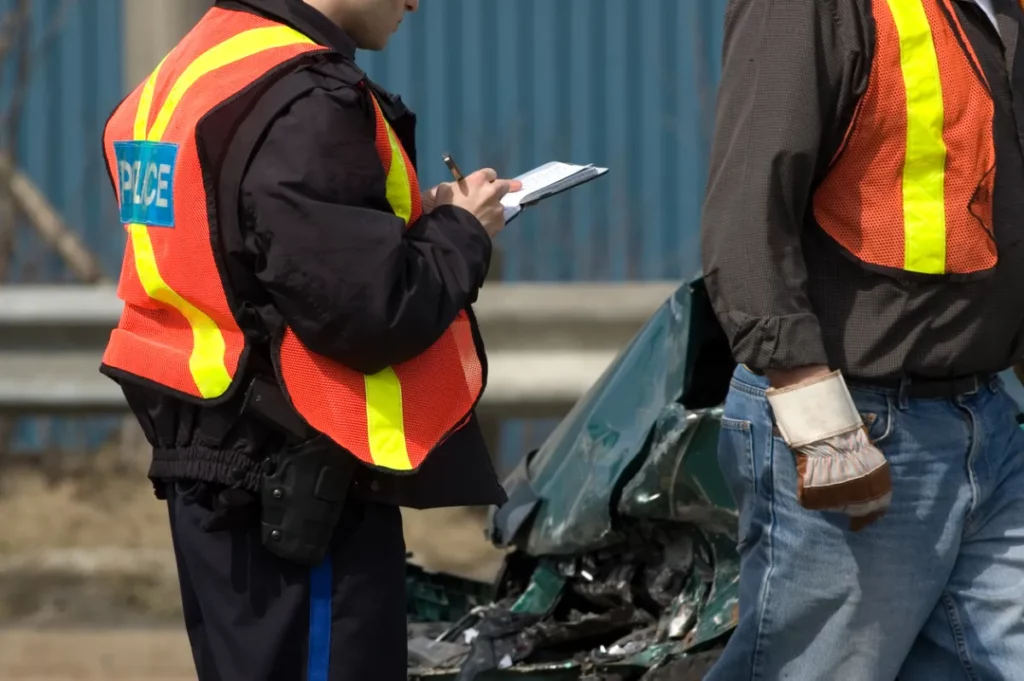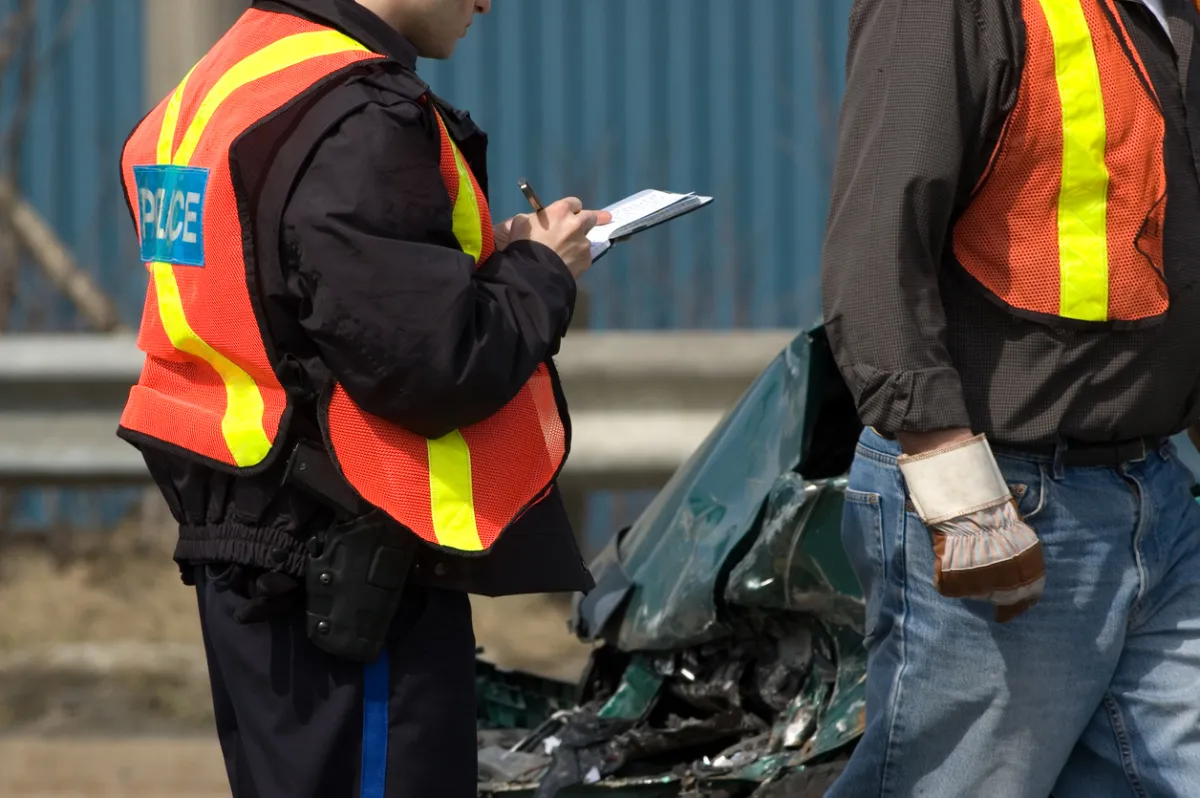
A car accident can leave you shaken, confused, and overwhelmed, especially when it comes to figuring out how to pursue compensation. Whether you refer to it as a car accident or an auto accident, understanding the legal and insurance claims process is crucial. One of the first things most people wonder is: Can you claim a car accident settlement without a police report? The short answer is yes, but it’s not always straightforward.
At Delfino Green & Green, we’ve helped countless clients successfully recover compensation, even when there was no police report on file. While a report can help strengthen your claim, it’s not the only way to prove what happened. In this article, we’ll walk you through how to move forward without one—and how a skilled car accident lawyer can help.
To learn more about your rights in personal injury cases, visit our California personal injury legal services page.
California Law and Police Reports
California Vehicle Code § 20008 mandates that drivers involved in an accident must report it to the local police department or the California Highway Patrol (CHP) within 24 hours if the crash resulted in any injuries or fatalities. Under certain circumstances, California law requires that an accident be reported to authorities, such as when there are injuries, deaths, or significant property damage.
The law also requires a report if the property damage appears to exceed $1,000. In these cases, accidents must be reported to the police or the California Highway Patrol. Additionally, California law requires that a written report, such as the SR-1 form, be submitted to the DMV within ten days if there are injuries, deaths, or property damage exceeding $1,000. Given the high cost of vehicle repairs and medical care, the vast majority of accidents meet this financial threshold.
The Importance of Police Reports
Filing a police report serves several functions. It creates an official record of the incident, documenting the date, time, location, and parties involved. The responding officer will typically gather preliminary information, including driver and witness statements, insurance details, and their own observations about the scene. This report is often the first piece of evidence an insurance adjuster will request when you initiate a claim.
So, what happens if a report is never filed? Perhaps the accident seemed minor at first, and you and the other driver agreed to handle it privately. Maybe you were on a private road where police jurisdiction was unclear, or you were simply too shaken up to think about calling 911.
While you can still file a car insurance claim without a police report, its absence creates a void that you must fill with other, equally compelling evidence. Without it, the situation can quickly become a “he said, she said” scenario, making it more difficult to definitively establish fault..
Why a Police Report Matters
A police report is often considered one of the most valuable pieces of evidence in a car accident claim. It serves as an objective, third-party account of the incident, typically compiled by a responding law enforcement officer. This report can include:
- Objective observations: The officer may document weather conditions, road hazards, and visible vehicle damage.
- Witness contact information: Officers often gather names and statements from people who saw the accident unfold.
- Accident diagrams: These visual illustrations can help clarify the position of vehicles, the point of impact, and the direction of travel.
- Statements from the involved parties: The report typically includes each driver’s version of events, including statements from other drivers, recorded soon after the incident.
- Critical details: The police report gathers critical details from drivers, passengers, and the police report itself to establish fault and support insurance claims.
This documentation can be instrumental in helping insurance adjusters, lawyers, and courts determine who was at fault. It may even expedite the claims process and reduce the chances of your claim being disputed or denied.
However, while a police report can make your case significantly stronger, it is not the only form of evidence. If you don’t have one, you’re not out of options. There are other credible ways to demonstrate what happened and support your claim. A qualified car accident lawyer can help you gather and present this alternative evidence effectively.
Filing a Claim Without a Police Report
You are ready to move forward. How do you initiate an insurance claim with no police report in California? The initial steps are the same: you must notify your own insurance company and the at-fault driver’s insurer of the accident. However, you must be prepared for a higher level of scrutiny from the insurance adjuster.
When you state that there is no police report, the adjuster will immediately require you to provide a significant amount of alternative proof to support your version of events. This is where the evidence you gathered at the scene becomes your foundation. Your claim will need to be supported by a comprehensive package of documents, including:
- Your photos and videos of the scene and vehicle damage.
- The other driver’s contact and insurance information.
- Contact information for any witnesses.
- A written statement detailing your recollection of the accident.
- Repair estimates for your vehicle from a reputable body shop.
- All medical records and bills related to your injuries.
It is essential to be organized, thorough, and prompt. Delaying the process can weaken your position, as evidence can disappear, and the insurance company may argue that the delay implies your injuries were not serious.
An experienced attorney can take charge of this process for you. They will compile your evidence into a professional demand package, present it to the insurer in a compelling narrative, and handle all communications on your behalf. This prevents you from making inadvertent statements that the insurer could use against you and ensures your claim is taken seriously from the outset.
How to Prove Fault Without a Police Report
Proving fault is the linchpin of a successful car accident claim, and without a police report, your ability to recover compensation relies heavily on your ability to gather evidence to establish liability. Fortunately, California law permits several alternative approaches to establishing liability.
You may be able to show fault by:
- Highlighting vehicle damage patterns: The location and extent of damage can often indicate the angle of impact and which driver likely caused the collision. For example, rear-end damage typically supports a claim against the following driver.
- Referencing traffic laws, the other driver violated: If the other driver ran a red light, made an illegal turn, or failed to yield, these violations can strongly indicate fault. You can use the California Vehicle Code and eyewitness accounts to help document such violations.
- Submitting dashcam or surveillance footage: Dashcams or nearby security cameras often provide real-time visual evidence of the crash. Time-stamped footage can be a powerful tool for showing exactly how the crash happened.
- Using medical records to link injuries directly to the accident: Immediate medical documentation, such as ER visits and diagnostic imaging, can help connect your injuries to the crash. This also demonstrates the seriousness of the impact.
- Securing expert testimony: In more complex cases, attorneys may bring in accident reconstruction specialists who analyze physical evidence, like skid marks, debris spread, and vehicle positioning, to scientifically determine fault.
Additionally, photos from the scene, eyewitness statements, and even the other party’s admissions of fault (in texts, emails, or at the scene) can be critical. A skilled attorney can help you gather evidence and build a solid case that establishes who caused the accident, even without official police documentation.
The Importance of Accident Scene Evidence
In the absence of a police report, the evidence you collect personally at the scene of the accident transforms from helpful to absolutely critical. Think of yourself as an investigator building a case from the ground up. The moments immediately following a crash are a “golden hour” for evidence collection before cars are moved, debris is cleared, and memories begin to fade.
Your primary tool is your smartphone. Use it to take extensive photos and videos from multiple angles and distances. Capture:
- Vehicle Damage: Document the damage to all vehicles involved, not just your own. Close-up shots of dents, scratches, and broken parts, as well as wider shots showing the position of the cars relative to each other, can help accident reconstruction experts determine the points of impact and force of the collision.
- The Entire Scene: Take wide-angle photos of the intersection, roadway, traffic signals, and any relevant road signs. This provides context for how the accident occurred.
- Skid Marks and Debris: Tire marks on the pavement, shattered glass, and broken car parts can tell a story about vehicle speeds, braking actions, and the sequence of events.
- Weather and Road Conditions: Was it raining? Was the sun causing a glare? Were there potholes or construction hazards? Documenting these conditions can be crucial, especially if they were a contributing factor.
Beyond your documentation, look for external sources of evidence. Many intersections, storefronts, and homes are equipped with surveillance or doorbell cameras. Politely ask nearby businesses or residents if their cameras may have captured the incident. Obtaining this video footage can be a game-changer, providing an unbiased, objective view of what happened. Securing this evidence quickly is vital, as many systems automatically overwrite old footage.
This is an area where a car accident lawyer can provide immediate assistance. The legal team at Delfino Green & Green can issue spoliation letters to preserve evidence and, if necessary, use subpoenas to obtain stubborn or uncooperative parties’ footage.
What to Know About California’s Auto Insurance Laws
California is a pure comparative fault state. That means even if you’re partially at fault in auto accidents, you can still recover compensation—your settlement will just be reduced by your percentage of fault under California’s insurance laws. These laws apply to claims arising from auto accidents and impact how damages are assessed and awarded.
For example, if you were 20% responsible and your damages were $50,000, you could still receive $40,000.
Other legal factors to consider:
- Minimum liability coverage in California is $15,000 per person for injury, $30,000 per accident, and $5,000 for property damage.
- Insurance companies in California often request documentation quickly; delay can hurt your case. Notify your insurance provider as soon as possible after an accident.
- You have two years from the date of the accident to file a personal injury lawsuit.
Compensation after a California car accident may include lost wages, medical expenses, and property damage. Injured parties are eligible to file a claim, and in cases of serious accidents, wrongful death claims may also be pursued.
If you’re concerned about an at-fault accident lawsuit risk in San Francisco, it’s crucial to speak with a car accident attorney immediately.
The Insurance Claim Process Without a Police Report
Here’s how the insurance claim process without a police report typically works:
- Notify your insurer: Contact them immediately and explain the situation.
- Submit documentation: Provide all available evidence, including photos, repair estimates, and medical records.
- Adjuster investigates: The insurance adjuster may interview you, request additional documentation, or conduct their investigation.
- Settlement offer: You may receive a settlement offer, but it may be lower than expected if they believe liability is unclear.
- Negotiation: A car accident attorney can help you counter lowball offers and push for fair compensation.
What Happens if You’re Sued After a Car Accident?
If someone sues you after a car accident, especially one where no police report exists, your legal defense may be more challenging, but there are still strategic steps you can take to protect yourself and your finances.
First and foremost, notify your insurer immediately. Your auto insurance policy likely includes a duty to defend, meaning the company must provide legal representation in the event you’re sued. Failing to alert your insurer promptly could jeopardize this protection.
Next, begin gathering evidence to support your version of events. This could include:
- Photos or videos of the accident scene
- Witness statements
- Dashcam footage
- Medical records and vehicle repair estimates
- Any written communication from the other party
These pieces of evidence can help recreate the circumstances of the crash and support your defense, especially in the absence of a police report.
In most cases, it is wise to hire a car accident lawyer, even if your insurer provides one. A personal attorney can offer independent guidance, advocate for your interests, and ensure that your liability exposure is minimized.
The bottom line: being sued after a car accident without a police report isn’t a hopeless situation—but it does require quick action, smart legal strategy, and a clear understanding of your rights and responsibilities under California law.
Final Thoughts: Yes, You Can Settle a Car Accident Without a Police Report
While it may complicate matters, the absence of a police report does not prevent you from filing a claim or receiving compensation. You just need to be strategic about gathering evidence and presenting your case.
Whether you’re filing an insurance claim with no police report in California or trying to avoid being taken advantage of after an accident in San Francisco, Delfino Green & Green is here to help.
Reach out today for a free case evaluation or to schedule your free consultation—and get the support you need to move forward with confidence.
Disclaimer: This content is for informational purposes only and does not constitute legal advice. For personalized legal assistance, please contact Delfino Green & Green directly.



